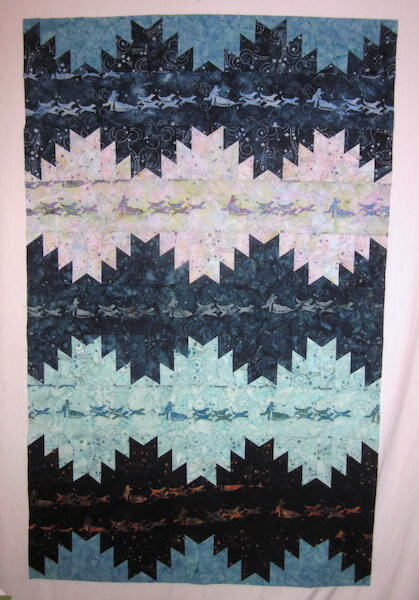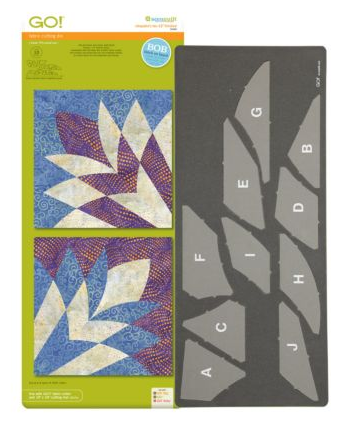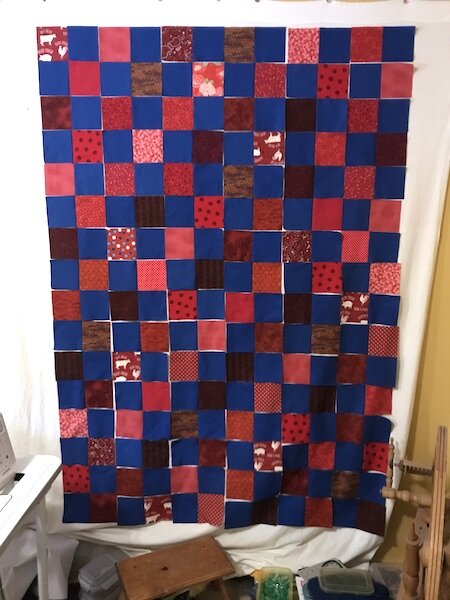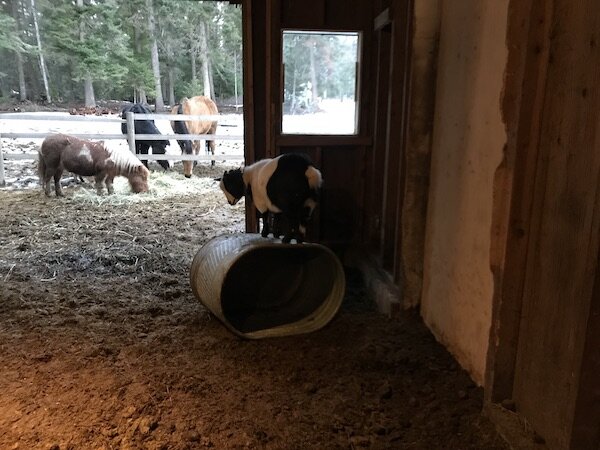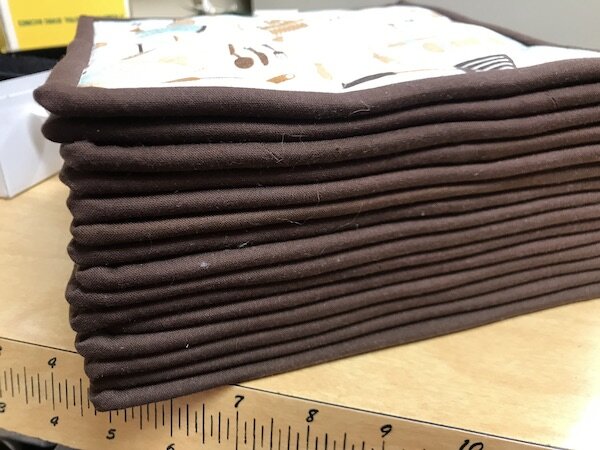A Quilt Center
At the end of the day Tuesday, I had this:
And at the end of the day yesterday, I had this (oh, those beautiful points!):
I promise you, it is not as wonky as it looks in the picture. Part of the is that angle of the photo and part of it is that this is adhering to a flannel sheet hanging on the wall. All parts were carefully measured during the assembly process.
Getting the center done is a milestone in this quilt top, although it is only the halfway point. I still have to add several borders (it is a queen sized quilt). The next step is to make and add a Delectable Mountain block border to the right and left sides. Those blocks are done. They were made as part of the process of making the ones in the center of the quilt, but they are not yet sewn together. Once those borders are sewn on, there will be a full border of the turquoise background fabric, a border of more Delectable Mountain blocks (yet to be made), a border of the focus fabric of the dogsleds, another border of Delectable Mountain blocks, and finally another solid border.
I expect that making the next two borders of Delectable Mountain blocks will go much faster both because I know how to make them and because they only involve two fabrics. I won’t have to be so careful about keeping everything sorted. Still, getting this done by the end of January may be a challenge. I may have to push it into the first two weeks of February. The woman for whom I am making this also sits on our denominational board. She lives in Spokane and she and her husband are riding over to Portland for a board meeting with me in a few weeks. I hope to give her the completed top by the time the board meeting rolls around. She gave me the kit back in September but the only timeline for finishing was the one I imposed on myself.
And I don’t have to quilt it. I just need to make the top.
***************************************************************
The BMW dealer in Spokane called yesterday to tell me the recall parts were in and they were ready to fix my car. I made arrangements to spend an extra day in Spokane on my way back from the board meeting and have them do it then. They need the car for eight hours, but they will give me a loaner to use while they have mine. I said to the husband that I thought it would be nice if they gave me an M5 or a 7-series and he laughed and said, “They will probably give you a Toyota.”
I will enjoy having some extra time to bum around Spokane, though. I’m ready for a road trip.


